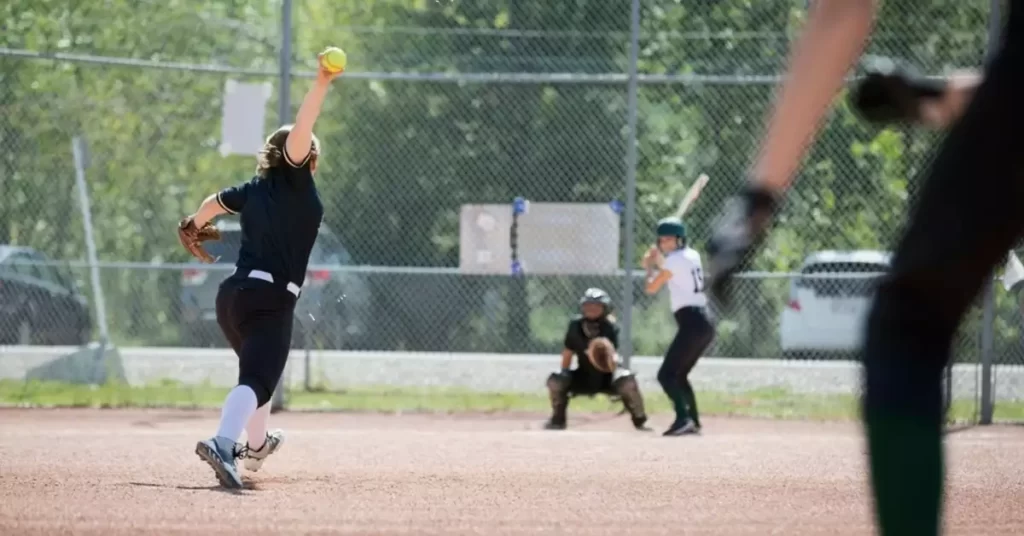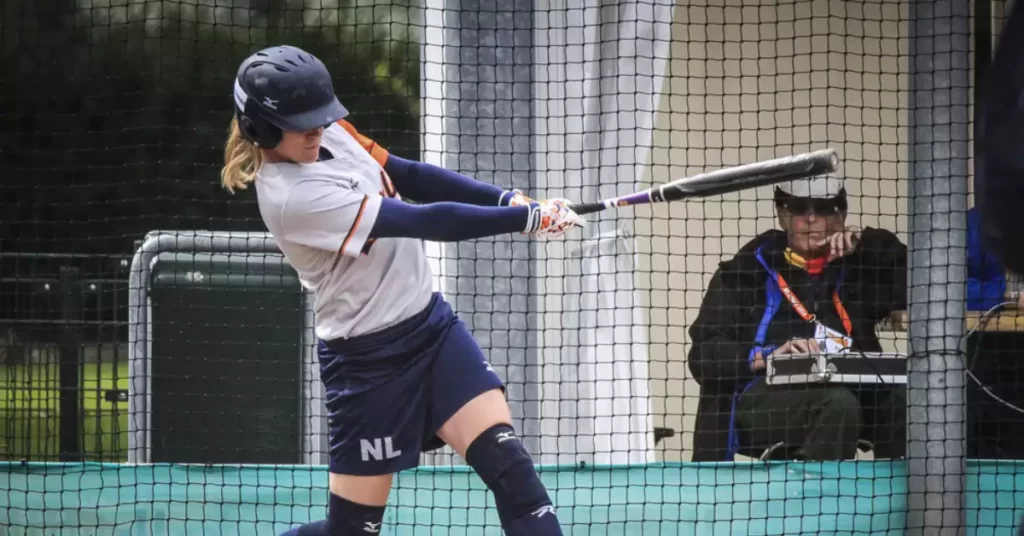Diving into the world of softball, one concept stands out: the strike zone. This vital aspect of the game influences every pitch and determines the outcome of each at-bat. Grasping the strike zone is essential for players, coaches, and fans alike.
The strike zone in softball is the area over home plate where a pitched ball must pass to be considered a strike. It is defined by the batter’s stance, height, and the dimensions of the plate, which plays a crucial role in the game’s strategy and success.
Ready to enhance your understanding of this key concept? Keep reading, and we’ll explore the strike zone’s dimensions, its impact on gameplay, and tips for mastering this crucial element in softball.
What is the Strike Zone?
Definition
The strike zone is a defined area over home plate that the pitcher must throw the ball through for it to be considered a strike.
If the ball passes through this zone without the batter swinging and missing, it is a strike; if not, it is a ball.
A pitch that the batter swings at and misses, regardless of the pitch’s location, is also considered a strike.
Importance in Softball
Understanding the strike zone is essential for both pitchers and batters. For pitchers, knowing the strike zone’s dimensions helps them deliver accurate pitches and increase their chances of striking out the batter.
For batters, being familiar with the strike zone allows them to make better decisions about whether to swing or let the pitch pass, increasing their chances of getting on base.

Dimensions of the Strike Zone in Softball
Vertical Limits
In softball, the vertical limits of the strike zone are determined by the batter’s stance. The top of the strike zone is the midpoint between the top of the batter’s shoulders and the top of their uniform pants. The bottom of the strike zone is the top of the batter’s knees.
Horizontal Limits
The horizontal limits of the strike zone are defined by the width of home plate, which measures 17 inches in softball.
Pitches that pass over any part of home plate, even if only slightly, can be considered within the strike zone.
Differences Between Fastpitch and Slowpitch Softball Strike Zones
Fastpitch Softball
In fastpitch softball, the strike zone is generally considered to be narrower than in slowpitch.
Fastpitch pitchers typically have more control over their pitches and throw at higher speeds, resulting in a more precise and challenging strike zone for batters to hit.
Slowpitch Softball
Slowpitch softball’s strike zone is typically wider, allowing for more margin of error for pitchers.
Due to the slower pitch speeds and higher arc, batters have more time to react, so a larger strike zone helps maintain a balance between offense and defense.
How Umpires Determine the Strike Zone
Factors to Consider
Umpires consider several factors when determining the strike zone, including the batter’s stance, the position of the catcher, and the trajectory of the pitch.
They must quickly assess whether the pitch has crossed through the strike zone, taking into account both the vertical and horizontal limits.
Challenges in Making the Call
Umpires face several challenges in accurately determining the strike zone. Their vantage point from behind the catcher can make it difficult to see the exact path of the ball, and the speed of the pitch can make it challenging to judge its location accurately.
Additionally, human error and personal judgment can lead to inconsistencies in strike zone calls between different umpires.
Pitching Techniques for Hitting the Strike Zone
Fastball
The fastball is a fundamental pitch in softball that relies on speed and accuracy to beat the batter.
By focusing on consistent mechanics and targeting specific areas within the strike zone, pitchers can increase their chances of throwing successful fastballs.
Changeup
The changeup is a deceptive pitch that appears similar to a fastball but travels at a slower speed, causing the batter to swing early and miss.
To effectively utilize the changeup, pitchers should aim for the lower part of the strike zone, making it more difficult for batters to adjust their timing.
Curveball
The curveball is a pitch that breaks away from the batter, making it challenging to hit. Pitchers should focus on throwing the curveball with proper spin and control, aiming for the corners of the strike zone to keep batters off balance.

Batter Strategies for the Strike Zone
Reading the Pitch
Batters must quickly read and react to incoming pitches, determining whether the pitch is likely to be in the strike zone.
Developing pitch recognition skills is crucial for batters to make split-second decisions on whether to swing or let the pitch pass.
Adjusting Stance
Batters can adjust their stance to better position themselves for hitting pitches within the strike zone.
By analyzing the pitcher’s tendencies and understanding their own strengths, batters can make subtle adjustments to increase their chances of making solid contact.
Anticipating Ball Movement
Understanding how different pitches move and break can help batters anticipate the location of the pitch as it crosses the strike zone.
This knowledge allows batters to make better decisions on which pitches to swing at, improving their overall performance at the plate.
Strike Zone Controversies and Debates
Inconsistency Among Umpires
One of the most significant controversies surrounding the strike zone is the inconsistency among umpires in making strike calls.
Differences in judgment and perception can lead to frustration for both pitchers and batters, affecting the outcome of games.
Electronic Strike Zones
As technology advances, there has been increased discussion about the possibility of using electronic strike zones to improve accuracy and consistency in calling balls and strikes.
While some argue that this would eliminate human error and create a fairer game, others believe that the human element of umpiring is an essential part of the sport.
Frequently Asked Questions
1. How does the strike zone differ between baseball and softball?
While the general concept of the strike zone is similar between baseball and softball, there are some differences in dimensions and interpretation.
Softball’s strike zone is typically considered to be wider, especially in slowpitch, and the vertical limits are more strictly based on the batter’s stance.
2. Can the strike zone change during an at-bat?
Yes, the strike zone can change during an at-bat if the batter adjusts their stance. Umpires must continually assess the strike zone based on the batter’s position and make calls accordingly.
3. What happens if a pitch hits the batter while in the strike zone?
If a pitch hits the batter while in the strike zone, it is considered a strike. However, if the pitch is outside the strike zone and the batter makes no attempt to avoid being hit, it is ruled as a hit by pitch, and the batter is awarded first base.
Final Verdict
Wrapping up, a solid comprehension of the strike zone in softball is imperative for anyone invested in the game. It plays a significant role in both offensive and defensive strategies, directly affecting the outcome of each at-bat and, ultimately, the game itself.
Now that you’re equipped with the knowledge of the strike zone, you can appreciate the intricacies of the game even more. Whether you’re a player, coach, or a fan, a deeper understanding of the strike zone will elevate your passion for softball and improve your gameplay or spectating experience.

